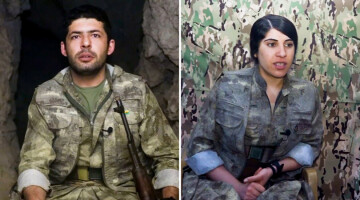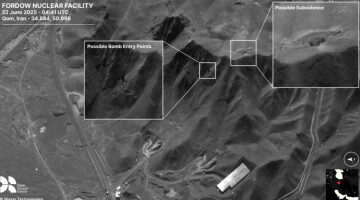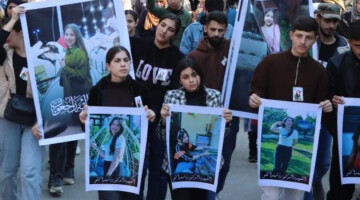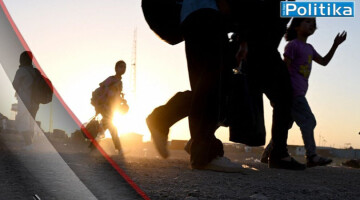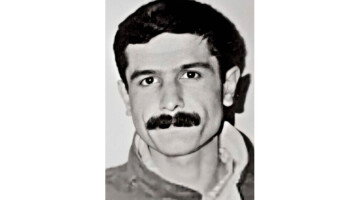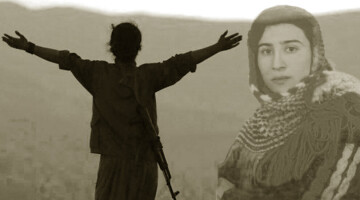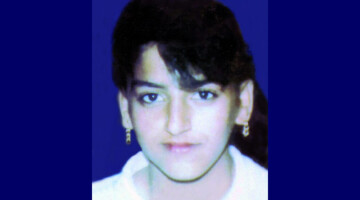The Turkish state attacked Afrin from the air and on the ground starting from 18 January. Militias that originated from al Qaeda, such as al-Nusra or the Islamic State (IS), were mixed into the groups of the so-called "Free Syrian Army" and led the occupation operation of Turkey on Afrin. Men, women and children were killed indiscriminately. After the Salafist groups marched into Afrin city on March 18, the destruction of the symbols of self-government and the plundering of the city began. The world powers, the US, the EU and the UN, who themselves feared the spread of the grassroots model of democracy, have agreed to the massacres, killings, looting and evictions through their silence.
The Turkish Republic president called the plundering and murdering militias in the neo-Ottoman style "National Forces." These militias were charged with changing the demographics of the region through massacres, expulsions, plundering and occupation.
TRANSPORT OF MILITIAS TO THE REGION CONTINUES
As the world closes its eyes to the daily growing crimes in the city, the events since 18 January have been documented as follows:
Those who refused to leave Afrin were forced to flee after March 18 by means of torture, repression, kidnapping and murder. In the place of the escaped population of Afrin, the FSA militiamen and their families evacuated from Ghouta in line with an agreement with Russia were settled there. There are such 41,000 people and the settlement policy is still ongoing. Ghouta militiamen are jihadists from the Faylaq al-Rahman, Jaisal al-Islam, Tahrir al-Sham and Ahrar al-Sham groups. They also began to terrorize the remaining people in Afrin and to loot anything left as "spoils of war". Those who oppose have been tortured and abducted, while graveyards, sacred and historic places were devastated and ancient objects were stolen and sold. The Kurdish language was banned and people were forced to use the Arabic and Turkish languages. The hanging of Turkish flags and Erdoğan pictures was made mandatory. In particular, Alevi and Yazidi settlements were completely devastated.
The regions where FSA militia were settled are as follows:
JINDIRES
1- Telef: Military restricted area - civilians are prohibited from entering
2- Kefer Zeyt: 150 houses, four families from Ghouta were settled
3- Kanî Gewrik: Military restricted area of the Turkish army.
4- Village Qicuma: 35 houses, five families from Ghouta were settled
5- Village Aşkana Rojhilat: 80 houses, three families from Ghouta were settled
6- Village Gewrikê: 160 houses, seven families from Ghouta were settled
7- Village Feqîra: 80 houses, 15 families from Homs, five families from Ghouta were settled
8- Village Bircikê: 30 houses, four families from Homs were settled
9- Village Meska Jorîn: 57 houses, a family from Ghouta was settled
10- Village Dêr Belût: 100 houses, ten families from Homs were settled
11- Village Diwan: 25 houses, 18 families from Ghouta and Homs were settled
12- Village Celemê: 930 houses, 100 families from Homs and 25 families from Ghouta were settled
13- Village Çeqala: 40 families from Ghouta were settled
SHERAWA
1- Village Şadîra: 160 houses, six families from Ghouta were settled
2- Village Xerzawiya: 400 houses, 200 families from Ghouta, 15 from Duma and three from Aleppo were settled
3- Village Birc Ebdula: 350 houses, 50 families from Ghouta were settled
4- Village Basûta: 460 houses, 110 families from Ghouta were settled
5- Village Basûfan: 250 houses, 50 families from Ghouta were settled
6- Village Birc Heyder: 150 houses, 30 families from Ghouta and Nebik were settled
7- Village Berad: 450 houses, 20 families from Ghouta were settled
8- Village Birc Silêman: 30 houses, eight families from Ghouta were settled
MABATA
1- Village Mîrkan: 50 families from Ghouta were settled
2- Village Sariya: Four families from Ghouta were settled
3- Village Habo: Nine families from Ghouta were settled
4- Village Şeytana: Six families from Duma were settled
5- Village Gewrika Jêrîn: Three families from Ghouta were settled
6- Village Gewrika Jorîn: Four families from Ghouta were settled
7- Village Erba: 18 families from Ghouta were settled
8- Village Bedîna: 23 families from Ghouta were settled
9- Village Dimiliya: Nine families from Ghouta were settled
10- Village Gemruk: 13 families from Ghouta were settled
ATTACKS ON CULTURAL MEMORY
Ain Dara/Girê Darê: On January 27, 2018, Turkish airstrikes completely destroyed the ancient settlement which was built before 1300 B.C. near the village of Girê Darê. The remains of the settlement and the 3,000-year-old Ishtar temple had previously been declared by UNESCO as one of the most important historical places in Syria.
Nebî Hûrî or Cyrrhus: The Hurrian site built in 2500 B.C., recognized by UNESCO as a place of protection in the Middle East, is called by the Kurds Nebî Hûrî. The Greeks called this place Cyrrhus. There, the churches of Saint Kozma and Demianos were built. Scientist Seman El Xeyur is also said to be buried in the church. In the small town was a large square with a spa in which there was always warm water. The mausoleum of St. Nebi Hûri was discovered in the southwest of the settlement. Above this, a mosque was erected in 1859. This historic site was bombed by Turkish aircraft three times and suffered heavy damage and was destroyed by the artillery shells of the "FSA" militia.
Roman church in the village of Kalutê: In the village of Kalutê, about thirty kilometers south of Afrin, there is a Roman church and other historic buildings. The village of Kalutê was bombed by Turkish jets on the second and third days of the attack. In the village there is a church from the 2nd century.
In the 4th century Syriac Christian hermit Mar Maron, who was followed by a religious movement that became known as the Maronites, lived here before settling in Kefer Nebo village. When Islam spread, the site was turned into a castle. The southern part of the ancient site was completely destroyed due to invasion attacks of Turkish forces and allied mercenaries.
The village of Elbîzka: Located 40 kilometers northwest of Afrin, the village houses a castle, a church and many other historical buildings from Roman times. Most of these were destroyed by aerial and artillery bombardment. The Turkish military and its militias restrict access to the village.
The village of Kolpe: The village Kolpe lies 15 kilometers in the southeast of Afrin. The historic buildings from the Mitanni period were destroyed on January 28 by Turkish aerial attacks. Eight villagers died and seven others were injured.
16,000 HISTORICAL OBJECTS WERE TAKEN TO TURKEY
While the millennia-old historical buildings in Afrin were deliberately destroyed, pieces of objects and structures were stolen by "FSA" members and sold in Turkey. The majority of the objects were taken to Istanbul, Ankara and Izmir. So far, about 16,000 historical objects from Afrin have reportedly been taken to Turkey. The director of the Syria Museum, Mehmud Hemûd, says that the stolen pieces must be more than 16,000 and explains that the "Stolen Objects Investigation Committee" has not yet been able to produce a final count.
THE TOMB OF DR. NURÎ DERSIMI WAS DESTROYED
The Şêx Zêd cemetery in the Zêdiyê district of Afrin was also looted and the graves were destroyed. The Şehîd Seydo Cemetery in Jindires has also been completely demolished. The cemetery of Rajo was razed to the ground with construction machinery. Also the tomb of Dr. Nurî Dersimi on the road to Meydankê was destroyed.
12 YAZIDI GRAVEYARDS WERE DESTROYED
In Afrin and the surrounding area, twelve Yazidi cemeteries were devastated. Military checkpoints were built on the destroyed cemeteries which are; the Şêx Berekat cemetery near Basufan, the Şêx Rikab cemetery near Şadiriyê, the Şêx Elî cemetery in Basufan, the Çelxane cemetery near Qîbarê, the Şêx Kursi cemetery near Atme town of Idlib, the Şêx Semis Adiya cemetery near Qîbarê, the Barse Xatûn cemetery near Qestel Cindo, the Şêx Seyda cemetery near Feqîra, the Bîr Cefer cemetery near Meşla, the Şêx Xerbî cemetery in Sinka and Hogir cemetery near Cirne.
At the Şêx Berekat Cemetery, the Turkish military has built a base.
FORCED CONVERSION TO ISLAM
The Yazidis and Alevites remaining in Afrin are forced to convert to Islam. Those who refuse are attacked, tortured, insulted and robbed. 22 mainly Yazidi villages in Afrin were completely destroyed by the Turkish military and its militias and declared as restricted areas. Mosques are being built in these villages, according to reports.
Names of the 22 villages around Afrin where 25 thousand Yazidis live together with Muslims are as follows; Basûfanê, Feqîra, Elî Qîna, Qestel Cindo, Qîbarê, Xezawiye, Buric Ebdalo, Qitmê, Ên Darê, Tirindê, Sînka, Kefer Zêt, Îska, Şadîr, Kîmarê, Çeqela, Aşka Rojhilat, Baê, Qoçma, Qîle and Cindirês.
Turkish army has reportedly built bases in two of these villages where only Yazidis live, Elî Qîna and Qestel Cindo.





